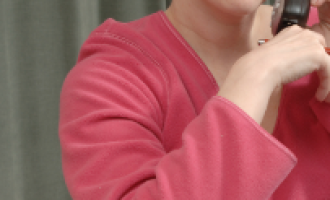
Doctors at Children's Hospital Los Angeles continue to lead the field of radiation oncology by pushing the leading edge of technological advances.
A new report published in Advances in Radiation Oncology by Arthur Olch, PhD, highlights use of specialised software that could advance treatment accuracy for paediatric cancer patients.
During radiation therapy, patient position must be stable from session to session to ensure radiation beams are properly targeting the tumour.
For this reason, x-ray images are taken before each treatment. Radiation therapists can use this information to reorient the patient so that the position is exactly the same each time.
Doctors at CHLA are taking this already rigorous process one step further.
From early in its development, Dr. Olch, a radiation physicist, has been evaluating the use of new software to advance quality assurance in radiation therapy.
In a recent publication, he highlights the use of this technological advance to aid in the treatment of paediatric cancers.
Radiation therapy uses a beam of targeted x-rays that kill cancer cells over the course of treatment.
After the beam passes through the patient, it is captured on an imaging panel.
Dr. Olch and his team make use of the information carried by these beams - called exit images - using the automated software.
These images contain important information about the exact dose being delivered to the tumour and surrounding tissues and can be compared to the planned doses.
Up to 20 images might be generated per treatment session.
With treatments occurring every day for several weeks, this makes for an unwieldy amount of data to manually process.
Now, radiation oncology staff have a tool that will do this in seconds.
The program automates not only image capture but also analysis.
Analyzing these images provides new information that allows further fine tuning of the radiation beams and patient position from session to session.
This, says Dr. Olch, gives radiation oncologists more information that can be used to account for anatomy changes in real time. "If a patient gains or loses weight, their dimensions change" he says.
"Likewise, as the tumour shrinks, radiation beams need to take a different trajectory."
Adjustments are routinely made as a standard of care, but by utilising the latest technological advances, CHLA radiation oncologists are redefining this standard.
"We have a very comprehensive quality assurance strategy," says Dr. Olch, "and this software is an important addition to our already high standard of care."
What does this mean for patients?
As one of the only paediatric centres in the country to adopt and use this new technology, CHLA gives patients the best chance at fighting their disease. "If your child needs radiation therapy, we are the only place around using this system," says Dr. Olch.
"It's difficult to say at this point whether this will necessarily cure more children. But if we can better target their tumours and refine our radiation dosing, we are reducing toxicity and giving kids their best possible chance."
Source: Children's Hospital Los Angeles
The World Cancer Declaration recognises that to make major reductions in premature deaths, innovative education and training opportunities for healthcare workers in all disciplines of cancer control need to improve significantly.
ecancer plays a critical part in improving access to education for medical professionals.
Every day we help doctors, nurses, patients and their advocates to further their knowledge and improve the quality of care. Please make a donation to support our ongoing work.
Thank you for your support.